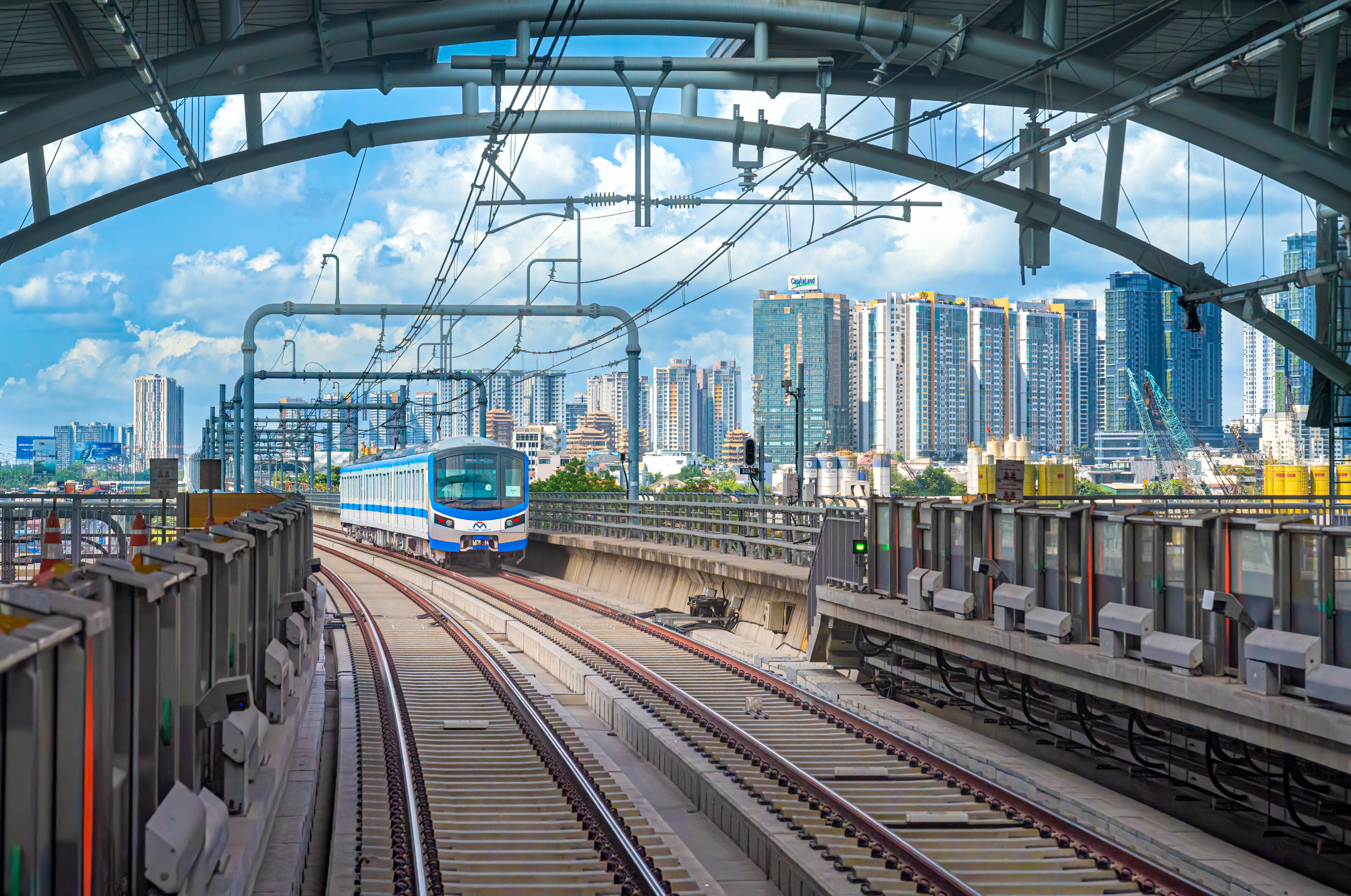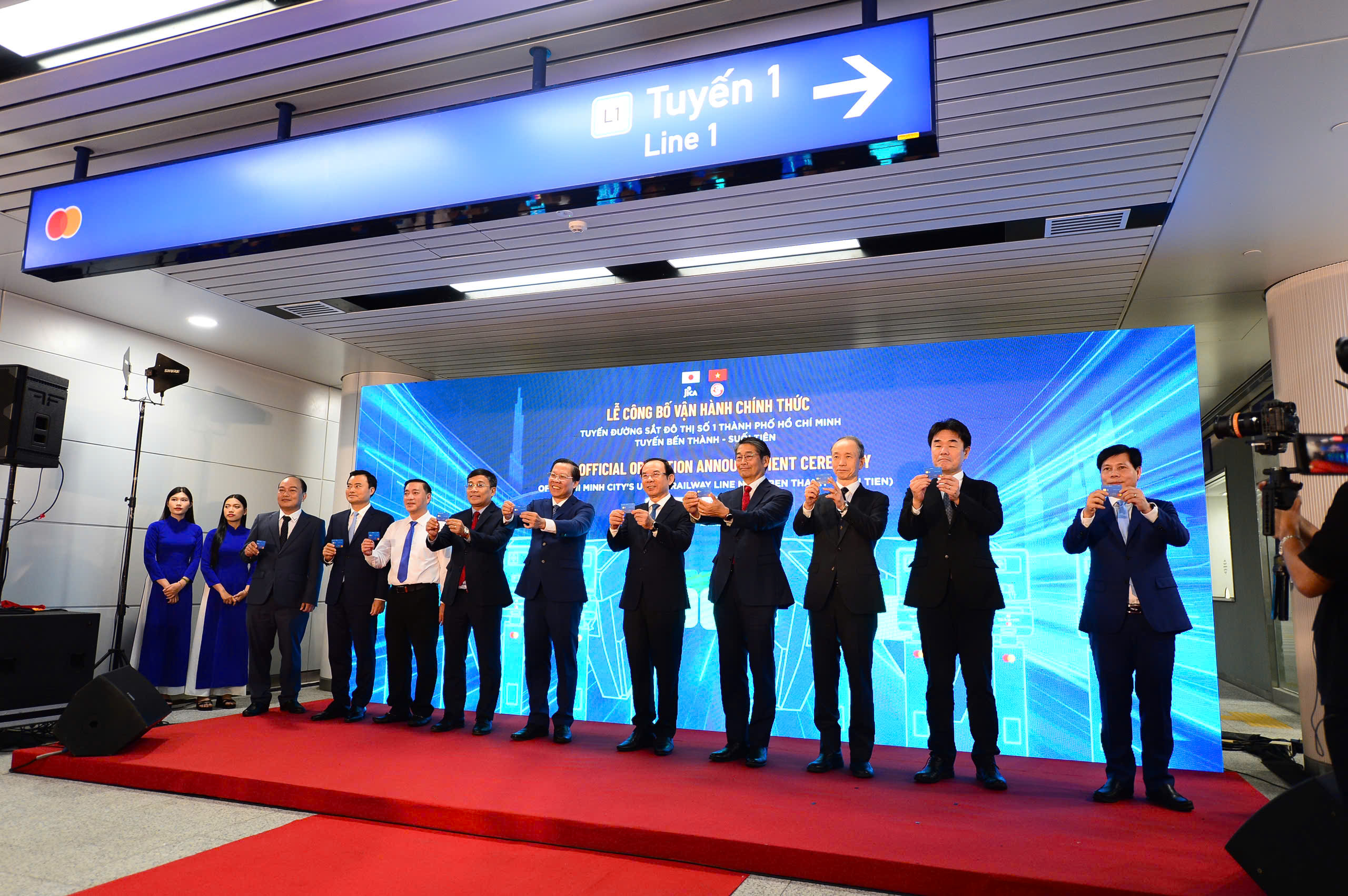Inauguration of Vietnam’s First Underground Urban Metro Line in Ho Chi Minh City
2024.12.25

On December 22, Ho Chi Minh City’s Urban Metro Line No. 1 (Ben Thanh - Suoi Tien section), funded by Japan’s ODA loans through Japan International Cooperation Agency (JICA), officially commenced operation.
At the Inauguration ceremony, Mr. Nguyen Van Nen, Party Secretary of Ho Chi Minh City, Mr. Phan Van Mai, Chairman of Ho Chi Minh City People’s Committee, Mr. Nguyen Minh Vu, First Deputy Minister of Foreign Affairs, Mr. Naoki Ito, Ambassador Extraordinary and Plenipotentiary of Japan to Vietnam, Mr. Yuichi Sugano, Chief Representative of JICA Vietnam Office, and representatives of organizations involved in the project were in attendance to celebrate this historic event. Following the ceremony, the stations were opened to welcome the public. The platform buzzed with excitement as residents gathered to celebrate the commencement of Line 1’s operations.

Protocal for starting commercial operations

Suoi Tien Terminal platform
Ho Chi Minh City, as Vietnam’s largest economic hub, faces significant challenges related to traffic congestion and air pollution alongside its rapid population growth and economic development. The project constructed an urban railway line connecting Ben Thanh Station in the city center with Suoi Tien Station in the northeastern part of the city. Spanning over a total length of 19.7 kilometers with 14 stations, Metro line 1 marks not only the City’s first urban railway but also Vietnam’s first subway line, featuring a 2.5-kilometer underground section including three stations running through densely populated urban areas and major business centers.
The trains, manufactured and assembled in Japan, are equipped with advanced safety equipment and signaling systems adhering to Japanese railway standards. Station platforms are installed with automatic platform screen doors to prevent falls onto the tracks, and the facilities are designed to be user-friendly and accessible for people with disabilities (e.g., braille signage, information boards, speaker systems, and priority areas onboard for wheelchairs). Notably, the underground stations were uniquely designed to harmonize with the surrounding urban landscapes. Construction was carried out through a collaborative effort between Japanese contractors, known for their advanced technical and managerial expertise, and Vietnamese companies.

Inside Ben Thanh Station

Inside Opera House Station
Underground tunnel (Photo: Shimizu Corporation and Maeda Corporation)
To prepare for the operation of the line, Ho Chi Minh City Urban Railway No. 1 Company Limited (HURC1) undertook extensive preparations, including establishing a operational safety management system and conducting trial runs across various scenarios. JICA has consistently supported HURC1 since its establishment alongside with enhancing the organization's operational management capacity by sharing Japanese railway management know-how and expertise.
Through this project, JICA hopes to provide residents with a safe and convenient mode of transportation, while contributing to reducing traffic congestion and air pollution in the City, which ultimately supports the socio-economic development of the region.
JICA remains committed to continuously supporting the development of Vietnam’s urban railway network.
scroll